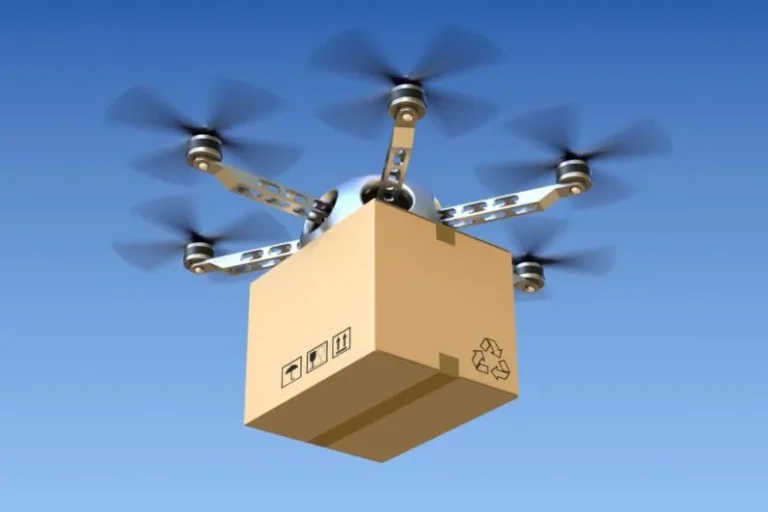
The Complete Guide to Starting a Sustainable Business in 2025
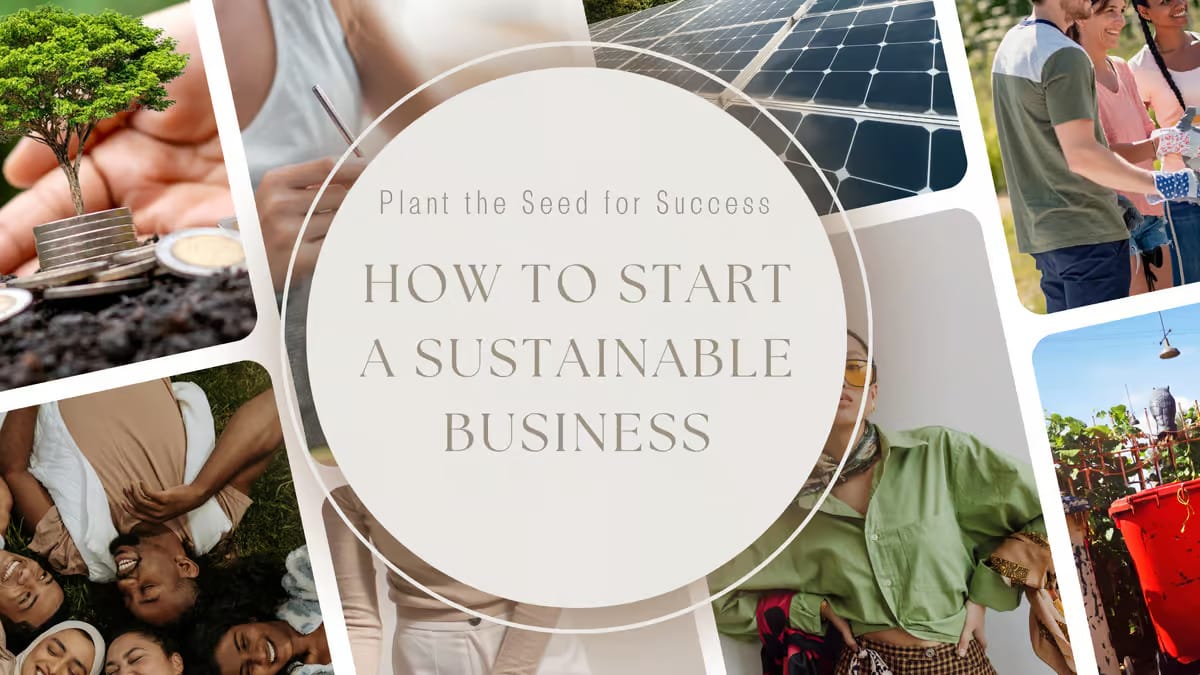
Table of Contents
Starting a sustainable business in 2025 isn’t just a good idea anymore. It is quickly becoming the default expectation.
Consumers are shifting fast. They are not only looking for products and services that solve their problems, but they are also questioning whether those businesses respect the planet and the people behind them. From fashion to food, tech to transport, sustainability has moved from niche to mainstream.
At the same time, governments and investors are pushing harder than ever. New policies around carbon emissions, plastic waste, and renewable energy are reshaping how companies operate. Green funding and climate-focused investments are at an all-time high, giving sustainable startups more opportunities to grow than ever before.
Whether you are building a green tech startup, starting an eco-friendly brand, or transforming a traditional business model into a sustainable one, the market is wide open in 2025.
It is not enough to simply add a green label or make vague promises about the environment. Customers today can spot greenwashing instantly. What they want is real, measurable impact.
That is exactly what this guide is about, and I know it will be long enough that you’ll want to spend some time with it. I will walk you through everything you need to know to start a sustainable business in 2025. From choosing the right niche, securing funding, and building a responsible supply chain, to marketing without falling into greenwashing traps.
Why This Moment Matters for Sustainable Businesses
We’re living through a period where sustainability is no longer a nice-to-have; it’s becoming the standard. Several shifts are reshaping how sustainable businesses grow and compete:
- AI-driven sustainability tools are now widely accessible, allowing even small businesses to track, report, and reduce their carbon footprint.
- Stricter regulations on emissions, waste, and reporting are forcing businesses to stay transparent and accountable.
- Green funding and impact investing are expanding quickly, with more capital flowing to startups tackling climate and social challenges.
- Consumer demand is stronger than ever. Gen Z and Millennials are actively choosing brands that align with their values, and they make up the majority of today’s buyers.
- Circular economy models are moving from theory to practice. Repair, reuse, and recycling aren’t just environmental wins; they’re turning into profitable, sustainable business opportunities.
This isn’t a future trend. It’s happening now. And the businesses that step into it early will have the advantage of shaping the new normal instead of playing catch-up later.
Finding Your Purpose Before You Start
When I first started thinking about building something, I realized I had to pause. It’s easy to get caught up in business ideas that look profitable or trendy, but without a real sense of purpose, the fire dies out pretty fast.
For me, purpose means asking: Why am I doing this? Not in a surface-level way, but in a way that actually ties back to how I want to live my life.
If you’re starting a sustainable business, purpose has to sit at the center, because the path isn’t always easy.

I personally like the concept of Ikigai. It’s a Japanese idea that real purpose comes from the overlap of what you love, what you’re good at, what the world needs, and what people are willing to pay for. That last piece is important. It can’t just be a dream. It has to be grounded in reality.
When I was figuring out my own direction, I literally wrote this out. I listed things I care about, things I know how to do, and things people constantly ask me for help with. Over time, it became clear where the overlaps were.
If you’re thinking about starting a sustainable business, I’d encourage you to do the same. Write it down. Map it out. Notice what feels exciting and what feels forced.
Because here’s the truth: without a clear purpose, even the best business model won’t last.
Quick Purpose Check
Grab a notebook (or open a doc) and answer these three questions honestly:
- What do I care about so much that I’d still do it even if it didn’t pay me right away?
- What skills or experiences do I already have that could help solve a problem in sustainability?
- Is this something the world actually needs, and are people willing to pay for it?
Now, circle the overlaps. If you can find a clear connection between all three answers, you’re not just chasing an idea. You’re building on purpose.
Laying the Groundwork: Research and Feasibility
Once you’ve got your purpose nailed down, the next step is figuring out whether your idea can actually work in the real world. This is where research and feasibility come in.
Start with a feasibility study. It’s not just about asking “can I do this?” but also “should I do this?” Run the numbers, test the assumptions, and look at both the financial and environmental angles.
A business might be profitable but harmful to the planet, or extremely eco-friendly but not financially viable. The real challenge is finding ideas that balance both.
A common mistake is treating sustainability as an afterthought, like a checkbox you tack onto an already-existing business plan. Instead, look at two layers:
- How does the business stand on its own (demand, costs, scalability)?
- How does it add or reduce environmental and social impact?
Then bring them together. If both sides look strong, you’re on the right track.
Do deep market research. Don’t limit yourself to basic surveys or keyword tools. Explore global frameworks and movements like the Circular Economy, Cradle to Cradle, and Biomimicry.
Use proven strategy tools. If you want structure, here are a few that can help you test and refine your business idea:
- Business Model Canvas: Great for visualizing how your business creates, delivers, and captures value.
- Blue Ocean Strategy: Helps you find untapped markets instead of competing in crowded ones.
- Porter’s Shared Value: Focuses on how businesses can create economic value by also creating social value.
- Doughnut Economics: Keeps you grounded between ecological limits and social needs.
If you’re looking for ways to stand out in a crowded green market, check out the piece on Blue Ocean Strategy for sustainable startups.
At this stage, it’s not about making everything perfect. It’s about building a solid foundation, so you don’t pour time and money into something that’s fundamentally flawed.
Designing a Sustainable Business Model
Here’s where the vision turns into a system. A sustainable business model isn’t just about what you sell; it’s about how you create and deliver value without burning out the planet or yourself.
When I first started diving into sustainable business frameworks, what struck me was how often people focused only on the product (“eco-friendly packaging”, “green ingredients”) but ignored the bigger picture.
The truth is, a business can’t be truly sustainable unless the model itself is designed that way.
Here are eight proven methods to shape a sustainable business model:
- Set Clear Goals
Define what “sustainability” means for your business. Is it carbon neutrality? Local sourcing? Social impact? Without clarity, you’ll end up chasing trends instead of leading. - Take Responsibility for the Supply Chain
Your product is only as green as the weakest link in your chain. Audit suppliers, push for ethical sourcing, and, if possible, bring transparency to your customers. - Engage Stakeholders Early
Employees, investors, customers, and even local communities all have a role. When they feel part of the journey, they’ll become advocates instead of skeptics. - Design for Circularity
Think beyond “use and throw.” Can your product be reused, repaired, or recycled? - Innovate Business Models, Not Just Products
Sometimes sustainability means shifting how you deliver value. Subscription models, sharing economies, or product-as-a-service approaches can lower waste and increase long-term revenue. - Price with Purpose
Sustainable doesn’t have to mean unaffordable. But you do need to balance cost with value perception. Customers are willing to pay more when they understand the story and the impact. - Measure and Report Impact
Numbers cut through the noise. Track metrics like emissions saved, resources conserved, or community benefits created. This not only builds trust but also keeps you accountable. - Stay Flexible and Adaptive
Sustainability is a moving target. Regulations shift, technology evolves, and consumer expectations rise. Build agility into your model so you can adapt instead of scrambling.
And here’s the extension that ties everything together:
A sustainable business model works only when financial viability and ecological responsibility grow together. If the business isn’t profitable, it won’t last. If it’s not environmentally responsible, it won’t matter. The sweet spot is designing in a way that every sale strengthens both the bottom line and the positive impact.
Think of it this way: your model should make it so the more you grow, the more the planet and society benefit too.
That’s when sustainability stops being a burden and becomes your biggest competitive edge.
Community and Social Entrepreneurship Approaches
One of the biggest myths about entrepreneurship is that you have to build everything from scratch. In reality, the strongest sustainable businesses are the ones that tap into the strengths of their communities instead of trying to “fix” them.
This is where Asset-Based Community Development (ABCD) comes in. Instead of focusing on what a community lacks, ABCD asks: What do we already have that we can build on? Skills, local networks, cultural traditions, existing businesses, natural resources – these are assets waiting to be connected.
For example, when I first looked at the sustainable business space, my instinct was to think about the gaps in the market.
But the moment I flipped the question and asked, What strengths are already here? I began to see opportunities in partnerships, local suppliers, and even knowledge-sharing communities that I hadn’t noticed before.
Social Entrepreneurship as a Driver of Change
Sustainable business and social entrepreneurship naturally overlap. Both aim to solve problems that matter to people while staying financially viable. The difference is that social entrepreneurship explicitly ties business success to community impact.
Think of it this way:
- A sustainable clothing brand might focus on organic cotton and fair labor.
- A social enterprise clothing brand would go one step further, making community empowerment. For example: training women artisans or reinvesting profits into local schools.
That’s why many of the most successful sustainable startups don’t just talk about “eco-friendly products.”
They talk about improving lives and strengthening communities, which makes their story much more powerful.
Building Buy-In from Stakeholders
Even the strongest idea can fail if the people around it aren’t on board. That’s why building stakeholder buy-in early is critical:
- Investors today are not just looking for ROI. Many of them are impact-driven, but they’ll want to see a clear link between community outcomes and business sustainability.
- Focus groups can help you test whether your product or service truly resonates with the people it’s meant for. In fact, some of the best pivots come from listening to early community feedback.
- Core group building – whether it’s co-founders, advisors, or local champions – creates a shared sense of ownership. If people feel like they are part of the story, they will stick with you when things get tough.
I’ve seen that sustainability is not just about supply chains or carbon numbers. It’s also about relationships with customers, partners, and the wider community.
Once that human layer is integrated into the business, sustainability becomes more than a buzzword. It becomes a movement people want to support.
Best Sustainable Startup Ideas (For inspiration)
If you’ve ever stared at a blank page thinking, “Okay, I want to build something sustainable… but what exactly?” you’re not alone. The good news is that the world of green entrepreneurship is exploding with possibilities.

Below are some of the most promising areas where innovation, demand, and sustainability intersect.
1. Renewable Energy Solutions
The shift from fossil fuels to clean energy is one of the biggest transitions of our time. Startups can thrive by making renewable energy more accessible, affordable, and localized.
- Solar microgrids for rural communities without reliable electricity.
- Affordable rooftop solar kits designed for small businesses and households.
- EV charging stations powered by solar or wind energy.
The opportunity here is massive because governments, investors, and consumers are all aligned. Everyone wants clean power. If you can simplify access or reduce costs, you’re in the game.
2. Eco-Friendly Packaging
Plastic pollution is one of the loudest problems consumers are aware of. The world is ready to ditch single-use plastic, but alternatives need to be scalable, affordable, and practical.
- Compostable packaging made from cornstarch, bamboo, or seaweed (find something new and innovative).
- Refillable and returnable container systems for online and local retailers.
- Biodegradable mailers for e-commerce brands.
Startups in this space often win when they combine functionality with a great story. Imagine an unboxing experience where customers feel like they’re part of reducing waste.
That emotional hook can make eco-packaging a competitive advantage.
3. Sustainable Fashion
Fashion is one of the dirtiest industries globally, but it’s also one of the most visible, which means it’s ripe for disruption.
- Clothing lines made from recycled fabrics or natural dyes.
- Platforms for renting and reselling clothes instead of fast fashion waste.
- Transparent supply chain models where customers know exactly how their clothes were made.
The sweet spot here is combining style with values. People don’t want to sacrifice aesthetics for ethics. The best sustainable fashion startups prove you can have both.
4. Green Cleaning & Cosmetic Products
Households and businesses are waking up to the harmful chemicals in traditional cleaning products. The demand for non-toxic, plant-based alternatives is surging.
- Concentrated cleaning refills to reduce plastic packaging.
- Subscription boxes for eco-friendly home cleaning.
- B2B green cleaning solutions for offices, schools, and hotels.
- Cosmetic and beauty products follow sustainable guidelines.
This sector is all about trust. A clean brand identity, ingredient transparency, and proven effectiveness can quickly build loyal customers.
5. Vertical Farming and Urban Agriculture
With cities expanding and farmland shrinking, the way we grow food needs to evolve. Vertical farming and hydroponics are at the cutting edge of sustainable food production.
- Indoor farms supplying hyper-local fresh produce to restaurants.
- Smart hydroponic systems that consumers can use at home.
- Partnerships with schools and community centers for education and supply.
The appeal? Reduced food miles, fresher produce, and resilient local food systems. Investors also love this space because it combines tech, sustainability, and necessity.
6. Waste Management and Recycling
The global waste crisis is overwhelming, but that also means the market for innovative recycling and waste-to-resource solutions is huge.
- Platforms for recycling e-waste safely.
- Businesses that upcycle plastic, glass, or textiles into new products.
- Circular economy models where customers return used items for rewards.
The best part is, governments are actively seeking partners to help with waste management challenges. That opens doors for startups that can prove scalability.
7. Sustainable Transportation
From daily commuting to logistics, transportation has one of the biggest carbon footprints. Startups can rethink mobility to be greener and smarter.
- E-bike and scooter sharing platforms.
- Local carpooling or ride-sharing apps for schools and offices.
- Green logistics solutions – like EV-based last-mile delivery.
If you can design a solution that saves people money and reduces emissions, adoption becomes much easier.
8. Green Tech and Smart Homes
Sustainability doesn’t just live in the physical world; tech is a huge enabler. Smart systems can reduce waste and make eco-friendly living frictionless.
- AI-powered apps that track carbon footprints.
- Smart thermostats and energy meters for homes.
- Platforms connecting consumers with local green sustainable businesses.
This space is especially attractive for tech-minded entrepreneurs who want to merge software with sustainability.
9. Sustainable Food and Plant-Based Alternatives
The plant-based food revolution is a full-blown shift in how people eat.
- Plant-based protein alternatives that mimic meat.
- Local organic food delivery networks.
- Brands offering snacks and packaged goods with minimal ingredients and low impact.
Customers are voting with their wallets for healthier, sustainable diets, and startups are racing to meet that demand.
10. Eco-Tourism and Experiences
As people look for more meaningful travel, eco-tourism is booming. But it’s not just about nature retreats, it’s about designing experiences with minimal footprint and maximum cultural exchange.
- Eco-lodges powered by renewables.
- Guided tours led by local communities, focusing on conservation.
- Platforms that rate and connect sustainable travel experiences.
Done right, this creates not just a business, but a movement in how people travel and explore the world.
These are just a handful of examples, not the full picture. The sustainable business space is constantly evolving, and new technologies, creative solutions, and fresh approaches are emerging every day.
What truly matters is not just picking an idea from a list, but finding where it connects with your own purpose, your skills, and the community you want to serve.
Maybe it’s something you’re already passionate about. Maybe it’s a challenge you’ve seen up close and feel compelled to solve.
When you pair that personal drive with solid research and feasibility work, you’re building a sustainable business that’s both impactful and viable.
Marketing Your Sustainable Business
Starting a sustainable business is only half the battle. The real test is getting people to know about it, care about it, and choose it over alternatives.
Marketing a sustainable brand has a unique advantage: you’re not just selling a product or service, you’re selling a story, a movement, a better future.
But good intentions alone won’t sell. You need a strategy. Here are some practical approaches you can start applying:
1. Lead with authenticity.
Sustainability is a buzzword, and consumers are increasingly skeptical of “greenwashing.” Don’t make vague claims – show proof. Share your supply chain practices, sustainability certifications, or even behind-the-scenes processes that make your business genuinely sustainable.
2. Leverage storytelling.
Facts tell, but stories sell. Instead of just saying “our packaging is biodegradable,” tell the story of how much waste it diverts from landfills each year, or the local artisans who benefit from eco-friendly sourcing.
3. Use content marketing.
Blogs, YouTube videos, podcasts, Instagram & other social media posts are powerful tools to educate your audience. Talk about the problems your sustainable business is solving, trends in sustainability, and practical tips people can use in daily life.
This positions your brand as a trusted authority, not just a seller.
4. Think guerrilla.
You don’t need massive marketing budgets. Books like Guerrilla Marketing by Jay Conrad Levinson, or the strategies of marketers like Jay Abraham and Dan Kennedy, are goldmines of low-cost, high-impact tactics.
From creative community events to viral social campaigns, the idea is to make people talk about you without spending a fortune.
5. Build partnerships.
Other sustainable brands aren’t your competitors. They’re potential collaborators. Partner with eco-friendly cafés, local farmer’s markets, or green tech startups to cross-promote and tap into each other’s audiences.
6. Create an affiliate program.
If you’re a small startup with limited reach, turn your customers into your marketers. Offer referral bonuses, discounts, or small commissions for every sale they bring in. This not only builds loyalty but also spreads your brand through trusted word-of-mouth.
7. Go where your audience hangs out.
Don’t try to be everywhere. If your customers are on Instagram, invest there. If they’re professionals, LinkedIn might work better. Know your tribe and show up consistently.
8. Blend profit with purpose.
Marketing isn’t just about transactions. It’s about building a movement. Every campaign should remind people why your business exists, not just what you sell.
At the end of the day, marketing a sustainable business means walking the line between education and inspiration. The right strategy will make people not only buy from you, but also become advocates who spread your mission further than you ever could alone.
When I look back, one of the main mistakes I made in marketing was keeping everything in the online space. Going out and meeting people wasn’t even in my plan. But I eventually realized that real connections and genuine conversations often open doors that no amount of ad spend can.
Even if your sustainable business is purely online-based, attending events, networking, and building relationships can make all the difference. Word of mouth and personal references remain some of the strongest forms of marketing.
Challenges and Hard Truths of Starting Up a Sustainable Business
Starting a sustainable business is rewarding, but it’s not all smooth sailing. Here are some realities every founder should be ready for:
1. Everything takes longer than you think
From product development to gaining your first loyal customers, timelines almost always stretch. Sustainable supply chains and certifications can add extra time. Patience is part of the process. When I first started, I thought my launch would take three months. It ended up taking almost a year.
2. Delegation is harder than it looks
In the early days, you’ll want to do everything yourself. But trying to wear every hat leads to burnout. Learning when and what to delegate is a skill that keeps you sane and helps your business grow.
3. Overcommunication is essential
When running lean teams or working with freelancers, undercommunication kills progress. Err on the side of overcommunicating updates, clarifications, and expectations, so everyone stays aligned.
4. Bad hires happen
No matter how careful you are, not every hire or collaborator will work out. Holding onto the wrong person too long drains time, money, and energy. It’s better to make a tough call early.
5. Extra scrutiny on “sustainability” claims
Customers and investors are quick to call out greenwashing. Unlike traditional businesses, you’ll need to back up every claim with proof and transparency. Credibility is everything.
6. Balancing purpose and profit isn’t easy
Doing the right thing for the planet sometimes costs more or slows growth. Finding the balance between mission and money is one of the toughest ongoing challenges.
I know a small eco-brand that had to decide between regular packaging that was dirt cheap and compostable packaging that cost almost three times more. They chose the sustainable option, which meant tighter margins in the beginning. But over time, that choice built trust with their customers and gave them a stronger, more loyal community.
7. The mental game is real
Loneliness, self-doubt, and stress are part of the founder journey. Building a support system with mentors, peers, or community makes a huge difference in staying grounded.
This is Just the Beginning
Starting a sustainable business is not something you can learn from one guide. What we talked about here is just a piece of the puzzle.

The truth is, sustainability keeps changing. New tools, new challenges, and new ways of doing business show up all the time. So the journey is less about having all the answers and more about staying curious and open to learning.
Think of this as your starting point. I will keep adding more guides, stories, and resources to make this playbook stronger. But for now, take what clicks with you and start testing things out.
Building something green is never perfect. You will make mistakes, adjust, and try again. That is all part of it. What matters is keeping the bigger mission alive, creating businesses that actually make the world a little better.
I would love to hear from you. What has been your biggest challenge or lesson in starting something sustainable? Share it in the comments because your story might be exactly what someone else needs to hear.


